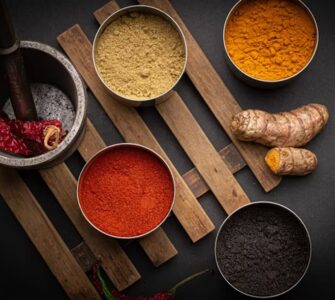Introduction
Coffee, that aromatic elixir that graces our mornings and fuels our late-night study sessions, has a rich and diverse heritage. From the verdant hills of Central America to the sun-kissed plantations of Africa, each continent contributes its unique flair to the world’s favorite beverage.
Let’s embark on a caffeinated adventure around the globe, exploring the regional nuances, brewing methods, and cultural significance of coffee.
Coffee from Central America
Central America boasts some of the most beloved coffee-growing regions. Countries like Costa Rica, Guatemala, and Honduras produce exquisite Arabica beans. Their high-altitude plantations yield coffees with bright acidity, floral notes, and a hint of chocolate. Sip a cup of Costa Rican Tarrazú or Guatemalan Antigua, and you’ll taste the volcanic soil and tropical sunshine that nurture these beans.
In Costa Rica, coffee cultivation is an art form. The Tarrazú region, nestled in the mountains, produces beans with a lively acidity and a symphony of flavors. Imagine sipping a cup of Tarrazú while overlooking lush green valleys—the taste of sunshine and mist captured in every drop.
Guatemala, with its volcanic soil and diverse microclimates, offers a kaleidoscope of coffee profiles. Antigua, a UNESCO World Heritage site, delivers beans with a velvety body, hints of cocoa, and a touch of spice. The cobblestone streets of Antigua echo with centuries of coffee history, making each sip a journey through time.
And then there’s Honduras, where coffee thrives in the highlands. The Copán region, named after the ancient Mayan city, produces beans with a balanced sweetness and a zesty twist. As you savor a cup of Honduran coffee, you’re sipping the legacy of ancient civilizations and the dedication of modern farmers.
African Coffee: A Symphony of Flavors
Africa, the birthplace of coffee, offers a symphony of flavors. Ethiopia, where the legend of Kaldi and his dancing goats originated, produces diverse varieties like Yirgacheffe, known for its fruity and floral profile. The Ethiopian coffee ceremony, a ritual of roasting and brewing, invites you to slow down and savor the moment. Each sip of Yirgacheffe carries whispers of jasmine, blueberries, and ancient traditions.
In Kenya, coffee is an art form. The AA-grade beans, grown at high altitudes, burst with acidity and complexity. Picture yourself in a Kenyan coffee cooperative, surrounded by passionate farmers discussing soil composition and rainfall patterns. The result? A cup of coffee that dances on your taste buds, revealing notes of blackcurrant, citrus, and adventure.
And don’t forget the bold, wine-like coffees from Uganda and Tanzania. Ugandan Bugisu, with its rich body and winey acidity, transports you to the slopes of Mount Elgon. Tanzanian Peaberry, shaped like tiny footballs, surprises with its bright acidity and hints of chocolate. African coffee is a celebration of complexity—a canvas painted with flavors from sunrise to sunset.
Asian Coffee: Spice and Intrigue
Asia contributes its own magic to the coffee world. Indonesia reigns supreme with its Sumatra Mandheling and Java Arabica beans. These earthy, full-bodied coffees carry whispers of spices, cedar, and dark chocolate. The Indonesian archipelago, with its volcanic landscapes, provides the perfect canvas for coffee cultivation.
Meanwhile, Vietnam surprises with its robust Robusta beans. Robusta, often overshadowed by its Arabica sibling, packs a punch. It’s the backbone of strong espresso shots, lending them a thick crema and a kick of caffeine. Next time you enjoy a Vietnamese cà phê đen, appreciate the boldness of Robusta—it’s the rebel of the coffee world.
The secret lies in the volcanic soils and monsoon rains that nurture these Asian gems. Whether you’re sipping a cup of Indonesian kopi tubruk or a Vietnamese egg coffee, you’re tasting centuries of trade, colonization, and resilience.
The Middle East: Where It All Began
Arabia, the birthplace of coffee culture, deserves a special mention. Yemen’s Mocha beans, named after the ancient port city, evoke visions of spice caravans and bustling markets. The Middle East introduced the world to the art of brewing coffee, and its influence echoes through time.
In Saudi Arabia, coffee is a symbol of hospitality. The traditional dallah, a long-spouted coffee pot, brews strong Arabic coffee. The aroma of cardamom and cloves fills the air as guests gather in majlis (sitting rooms) to share stories and sip from small cups. Saudi coffee rituals are steeped in tradition, connecting generations over fragrant brews.
Turkey, too, has a rich coffee heritage. The famous Turkish coffee, prepared in a cezve, is thick, unfiltered, and sweetened with sugar. The grounds settle at the bottom of the cup, allowing for fortune-telling—a delightful blend of mysticism and caffeine. As you sip your Turkish coffee, ponder the centuries-old tales whispered by the grounds.
South American Coffee: Brazil’s Dominance
South America, led by Brazil, dominates global coffee production. Brazilian Santos beans are the backbone of many blends, offering a smooth, nutty flavor. Colombia’s Juan Valdez brings forth balanced coffees with caramel sweetness. And let’s not forget the lively Peruvian and Ecuadorian beans. South America’s coffee legacy is deeply intertwined with our morning rituals.
In Brazil, coffee is more than a beverage; it’s a way of life. The sprawling plantations of Minas Gerais and São Paulo stretch like emerald carpets. The Cerrado region produces beans with a velvety body and notes of hazelnut. Brazilians enjoy their coffee strong, often accompanied by pão de queijo (cheese bread) or brigadeiro (chocolate truffles). It’s a sensory symphony—the warmth of the cup, the laughter of friends, and the rhythm of samba.
Conclusion: Sip the World
As we wrap up our journey, remember that every sip of coffee carries a story. Whether you’re savoring a cup of Ethiopian pour-over or a Brazilian cappuccino, you’re tasting the terroir, the labor of farmers, and the centuries-old traditions.
You might have noticed coffee from Europe is not on the list. Well, they don’t grow coffee, but here you can find some European coffee brands. So, raise your mug to the five continents—their coffee, their people, and the global camaraderie that brews in every cup.


















